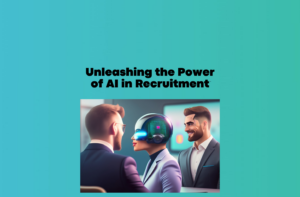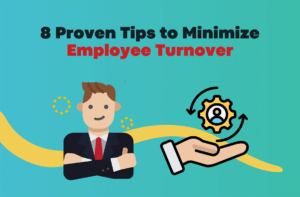The Closing Power of Data and AI in Recruitment Training:
A Success Story
As early adopters of the power of combining live recruiter-candidate or recruiter-client calls with artificial intelligence (AI) our recruitment training experts can help you to transform recruiter performance and make the best employment decisions.
One of our top RecruitmentTraining.com trainers, Jordan Underwood, has had tremendous success in helping recruiters to exceed targets. In this report, he explains his first-hand experience of identifying hidden potential and /or mistakes that normally get overlooked by busy managers – by using AI within real candidate and client conversations. In this Coaching Corner article, Jordan reveals the importance of data-driven decision-making and how it led to outstanding results for one of our clients.
The Initial Consultation:
Jordan’s client raised concerns about a recruiter who was struggling to hit her weekly interview target and who was weak at securing information and referrals from candidates. The client said that she was very hardworking and that her LinkedIn activity and call volumes were good. The client suspected that the issue lay with the quality of her search strategy and that she wasn’t asking for referrals often enough. However, armed with AI-powered call analysis and a comprehensive review of the recruiter’s activity, Jordan discovered several improvements, many of which the client was unaware of.
Data-Driven Insights:
Using our AI’s functionality to transcribe and analyse calls against our pre-programmed model for calls, the data analysis pointed to several root causes for the recruiter’s struggles, all of which were easy to improve. The most glaring mistake was that she had insufficient information about the opportunity she was trying to sell to her target company. She also had a lot to learn about identifying the candidates needs before selling the opportunity to them and she liked skills in quickly building rapport so that she could get useful information from the candidate. Jordan also identified that her candidate control was weak, and she was asking for referrals in an ineffective way.
These shortcomings and others highlighted below meant that despite being hardworking she had a jobs-taken-to-jobs-filled ratio of only 1 in 7.
Leveraging AI Jordan uncovered the following (NB: Names have been changed to protect confidentiality and you can see the full report here).
1. Interview Leads: Adele’s use of the filler phrase “I’d kind of like to ask” when inquiring about the candidate’s interviews at other companies needs to be improved A more skilled and concise approach, without using fillers, could have enabled her to find out which other companies the candidate had been interviewing with. As well as identifying a possible new vacancy, this information could have provided insights into his preferences, the types of opportunities he is pursuing, and his level of interest in the current vacancy.
2. Lack of Focus on Candidate’s Needs: She fails to inquire about the candidate’s key drivers, salary expectations, or other factors important to him in a new role. Understanding these aspects would have allowed her to tailor the conversation and highlight how the vacancy aligns with his career goals and preferences.
3. Request for Candidate Referrals: Her request for candidate referrals lacks enthusiasm and does not effectively highlight the benefits of referrals. Using phrases like “like do let me know” undermines the professionalism of the request. A more skilled and persuasive approach using the Ten Point Plan for candidate referrals will yield much better results.
4. Possible Leads into the candidate’s Existing Company: She did not inquire into the candidate’s current company or names of managers in that business.
5. Qualification on Salary, Benefits, and Expectations: Adele did not inquire about the candidate’s current salary, other benefits, or his salary expectations for his next role. Understanding these factors is crucial for ensuring a good fit between the candidate and the potential employer and avoiding any misalignments or disappointments later in the process.
6. Check Flexibility and Relocation: She did not inquire about the candidate’s flexibility in terms of travel time or his willingness to relocate.
7. Address Availability and Holiday Plans: She did not ask about the candidate’s availability or if he had any holidays booked in the near future. This basic information is crucial to avoid problems later down the line.
8. Probing The candidate’s Reason for Leaving: She did not explore the candidate’s reason for wanting to leave his current company. Understanding his motivations for seeking a new opportunity could have provided insights into any pain points or dissatisfaction that her client could address or improve upon.
9. Discussion on Counter-offer: She did not inquire about how the candidate would handle a potential counter-offer from his current company. Again, this is crucial to avoid problems later down the line.
In addition to the missed opportunities, Jordan saw the urgent need to coach improvement in her telephone manner. This proved to be a simple fix and within 4 days she demonstrated greater professionalism in her use of language and a big improvement in the way she sold jobs to candidates. By focusing more on the candidate’s needs she also quickly improved candidate control, and, after re-training and coaching, she massively improved her candidate referral strike rate.
Click here to see the full report and full transcript of the recruiter’s call.
Remarkable Results:
With some simple fine-tuning, Adele’s performance improved significantly. Her jobs-taken-to-jobs-filled ratio improved to 1 in 4 and the small improvement identified and coached by Jordan resulted in 11 extra interviews and £19,350 in billings over the next 6 weeks. Further to this, Adele is now regularly pulling leads and sales information that can be used for business development.
The Power of Data and AI in Leadership:
This success story serves as a powerful reminder of the transformative potential that data interpretation and AI can bring to the recruitment training landscape. By leveraging AI-driven insights, leaders can identify hidden underlying issues, develop targeted training solutions, and empower their teams to reach new levels of success. The ability to interpret data and capitalize on AI-driven technologies is becoming increasingly crucial in optimizing efficiency and performance,
Conclusion:
In the ever-evolving recruitment industry, it’s crucial for leaders and training professionals to embrace the power of data and AI. This anecdotal success story highlights the importance of analysing data to identify the true, root causes of performance challenges and to deliver customized training/coaching solutions that address them.
At RecruitmentTraining.com, we remain committed to providing cutting-edge training solutions that leverage data, AI, and industry expertise. By staying at the forefront of technology and utilizing data-driven insights, we empower recruitment leaders to transform their teams and achieve outstanding results.





